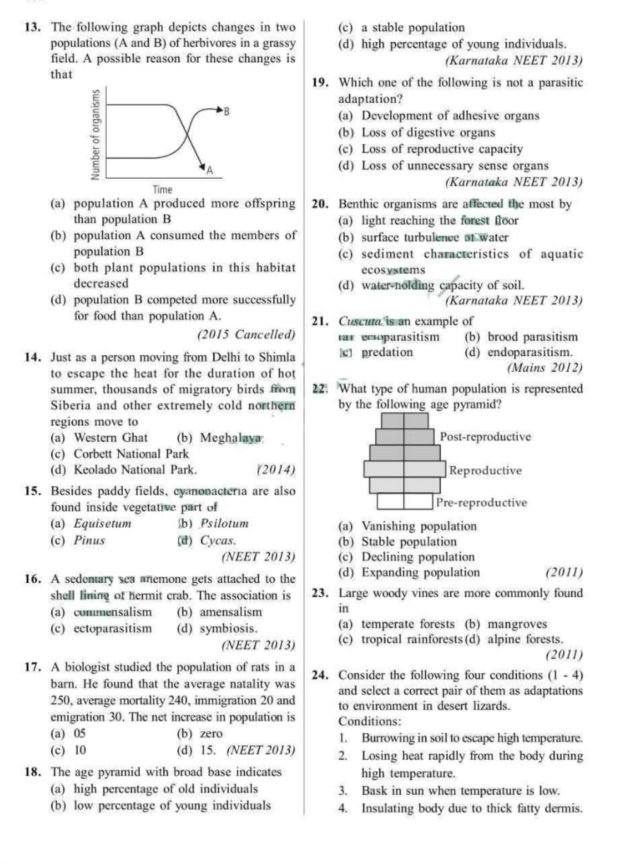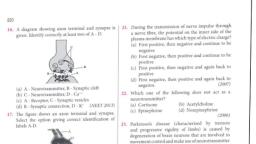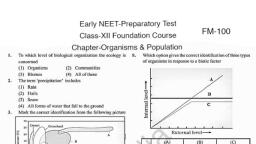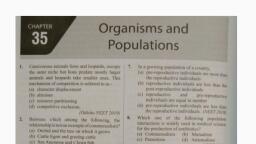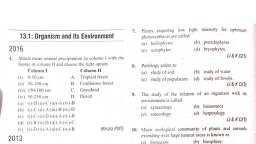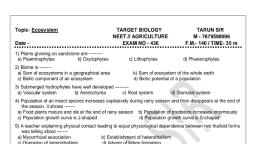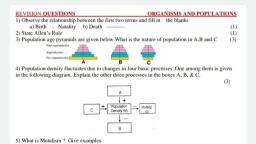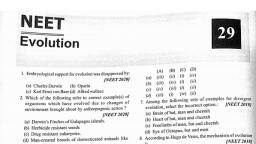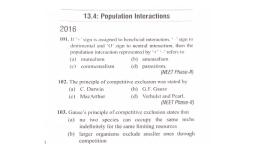Page 1 :
13. The following graph depicts changes in two, populations (A and B) of herbivores in a grassy, field, A possible reason for these changes is, that, , A, , , , Number of organisms, , Time, , (8) population A produced more offspring, than population B, , (b) population A consumed the members of, population B, , (©) both plant populations in this habitat, decreased, , (6) population B competed more successfully, for food than population A., , (2015 Cancelled), , Just as a person moving from Dethi to Shimla |, to escape the heat for the duration of hot |, , 4., , 19., , a, , (©) a stable population, , (d) high percentage of young individuals., (Karnataka NEET 2013), , Which one of the following is not a parasitic, , ‘adaptation?, , (a) Development of adhesive organs, , (b) Loss of digestive organs, , (©) Loss of reproductive capacity, , (@) Loss of unnecessary sense organs, (Karnataka NEET 2013), , Benthic organisms are affeceed the most by, , (@) light reaching the forest oor, , (b) surface turbulence se:Water, , (©) sediment characteristics of aquatic, , ecosystems, , (@) watersnotding of soil., (Karnataka NET 2013), , Cuascmaisoan example of, , vax cexaparasitism —(b) brood parasitism, , 1s) predation (4) endoparasitism., , (Mains 2012), , , , summer, thousands of migratory birds Som | 22, What type of human population is represented, , Siberia and other extremely cold nema |, regions move to, (a) Western Ghat (b) Meghalaya, (©) Corbett National Park, (4) Keolado National Park. ), Besides paddy fields, eyemonactena are also, found inside vegetatwwe part of, (a) Equisetum 1b) Psilotum, (©) Pinus @) Cyeas., , (NEET 2013), , A sedomuary sea anemone gets attached to the, , , , , , (a) symbiosis., (NEET 2013), A biologist studied the population of rats in a, barn. He found that the average natality was, 250, average mortality 240, immigration 20 and, ‘emigration 30, The net increase in population is, (a) 08 (b) zero, © 10 (@) 15, (NEET 2013), . The age pyramid with broad base indicates, (a) high percentage of old individuals, (©) low percentage of young individuals, , (©) cctoparasitism, , 7., , by the following age pyramid?, , Post-reproductive, Reproductive, , Pre-reproductive, (a) Vanishing population, , (b) Stable population, , (©) Declining population, , (@) Expanding population eo, Large woody vines are more commonly found, in, , (a) temperate forests (b) mangroves, , (©) topical rainforests(d) alpine forests., oil), , 24. Consider the following four conditions (1 - 4), , and select a correct pair of them as adaptations, , to environment in desert lizards., , Conditions:, , |. Burrowing in soil to escape high temperature., , 2 Losing heat rapidly from the body during, high temperature,, , 3. Bask in sun when temperature is low., , 4. Insulating body due to thick fatty dermis,
